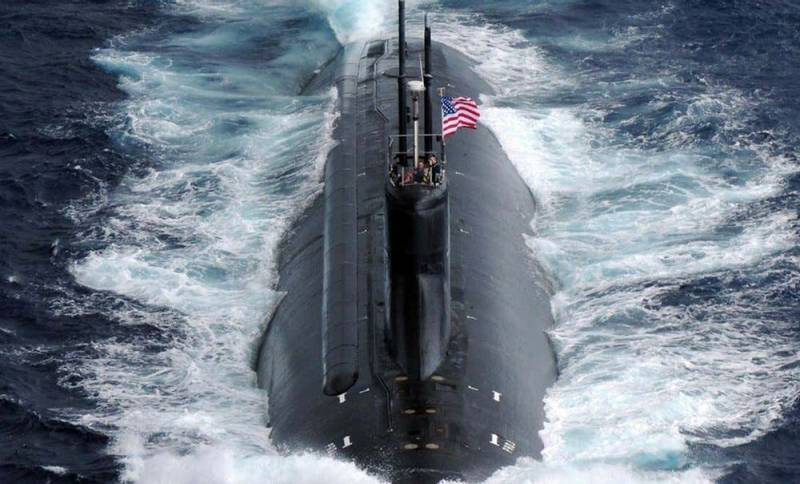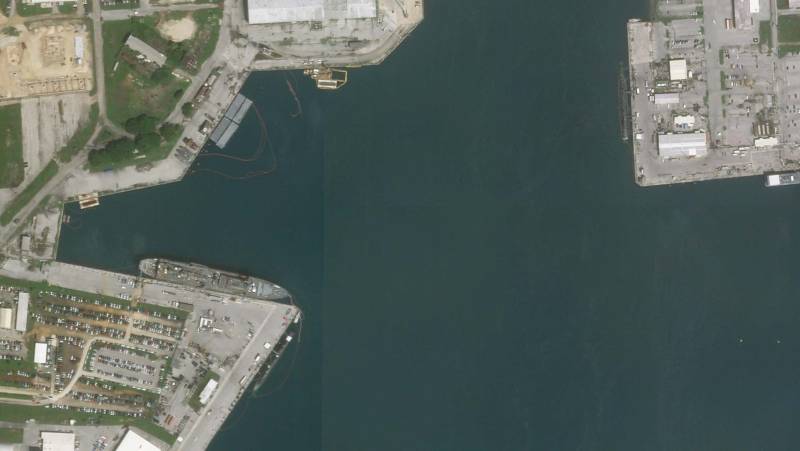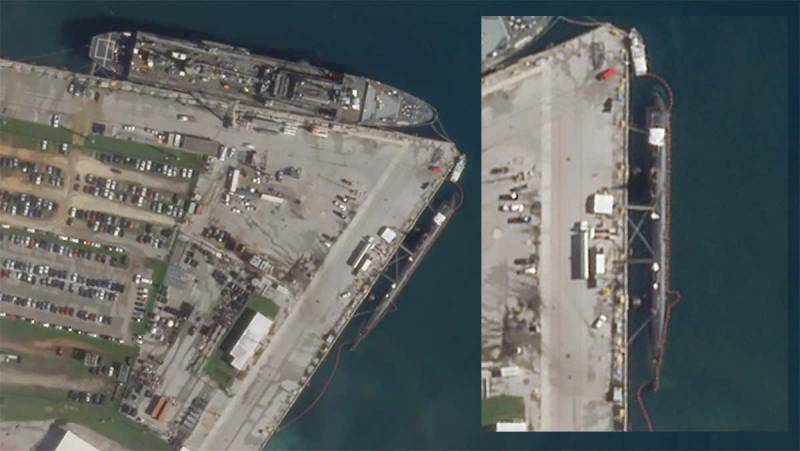First images of an American nuclear submarine after colliding with an unknown object in the South China Sea
The first images of one of the most valuable nuclear submarines of the US Navy - USS Connecticut ("Connecticut" or SSN-22), of the "Seawolf" class appeared on the Web, which collided with an unknown object in the South China Sea on October 2, 2021, writes the American online edition of The Drive.
After it became clear that the submarine was stable, and its reactor was safe for further operation, she limped out of the South China Sea and headed to the US naval base in Guam to assess the damage and investigate the accident. At the same time, the Navy is silent, what, in their opinion, the nuclear submarine faced, and do they have any idea that it was at all
- says the publication.
On October 20, Planet Labs captured satellite images of the port of Guam showing the USS Emory S. Land (AS-39) supply and maintenance ship moored to the pier, as well as a nuclear submarine reminiscent of Connecticut. The fact that this is exactly USS Connecticut was calculated by external features - dimensions and design. At the same time, another submarine, moored to the pier in the opposite part of the port, does not have a jet propulsion system and is equipped with a propeller. In addition, the Navy confirmed that the Connecticut nuclear submarine is indeed still in the port of Guam.
Interestingly, the pictures show absolutely no serious damage to the USS Connecticut, however, like that of the other submarine. There is nothing to indicate a strong blow. Probably, the damaged parts are located well below the surface waterline of the nuclear submarine. For example, a submarine could hit the bottom, this excludes the option of a direct frontal collision or impact on the upper part.
Light damage will still be invisible in such pictures. But good news lies in the fact that the entire front part of the submarine is not destroyed, as it was in other incidents
- clarifies the publication.
The US Navy has only three Seawolf-class nuclear submarines (apart from the one described, there is also the lead SSN-21 - (Seawolf) Seawolf and SSN-23 - (Jimmy Carter) Jimmy Carter), so the damaged one needs to be repaired and returned to service as soon as possible. The publication also expressed the hope that the military will soon report on the extent of the damage and the causes of the incident.



Information